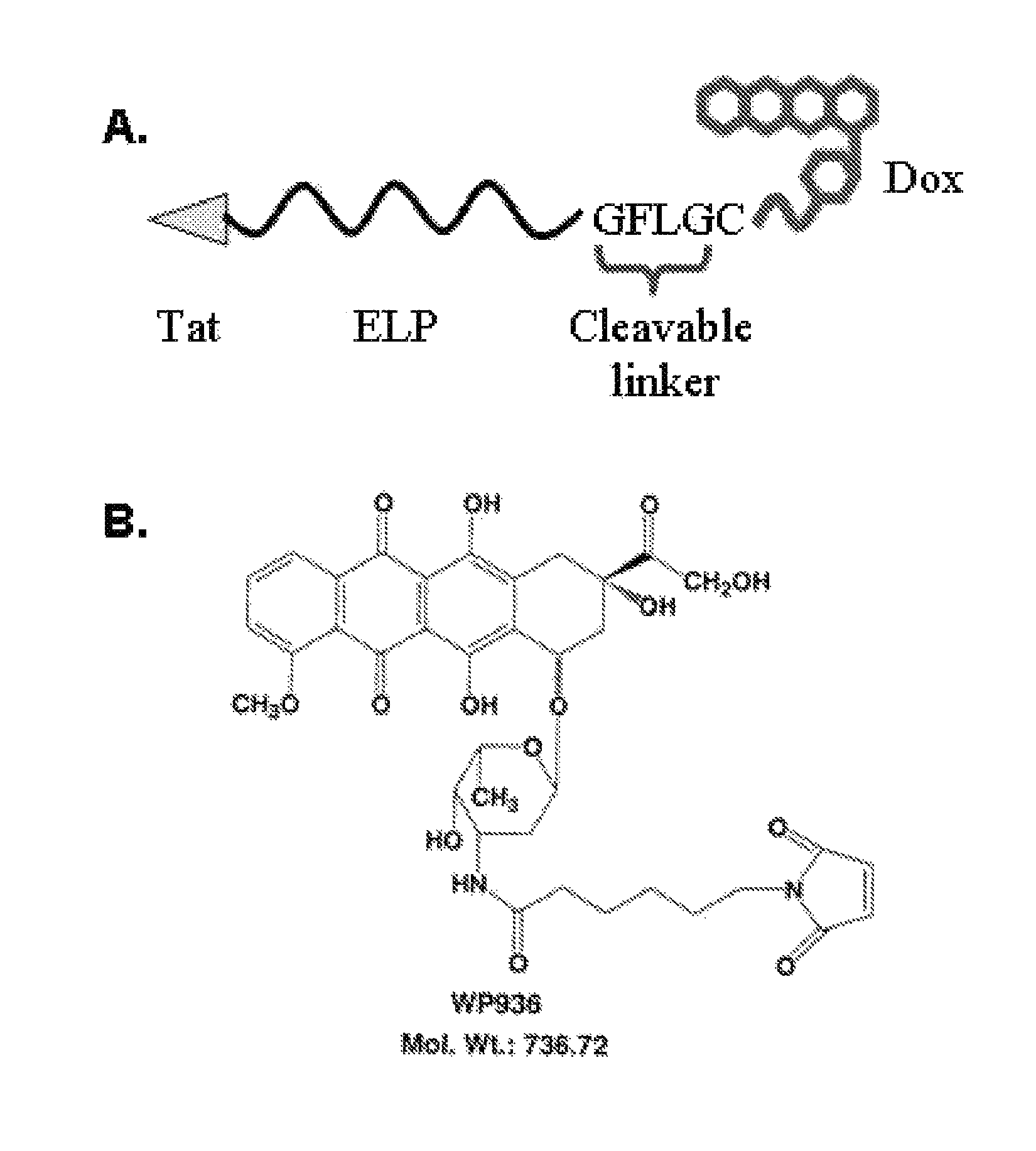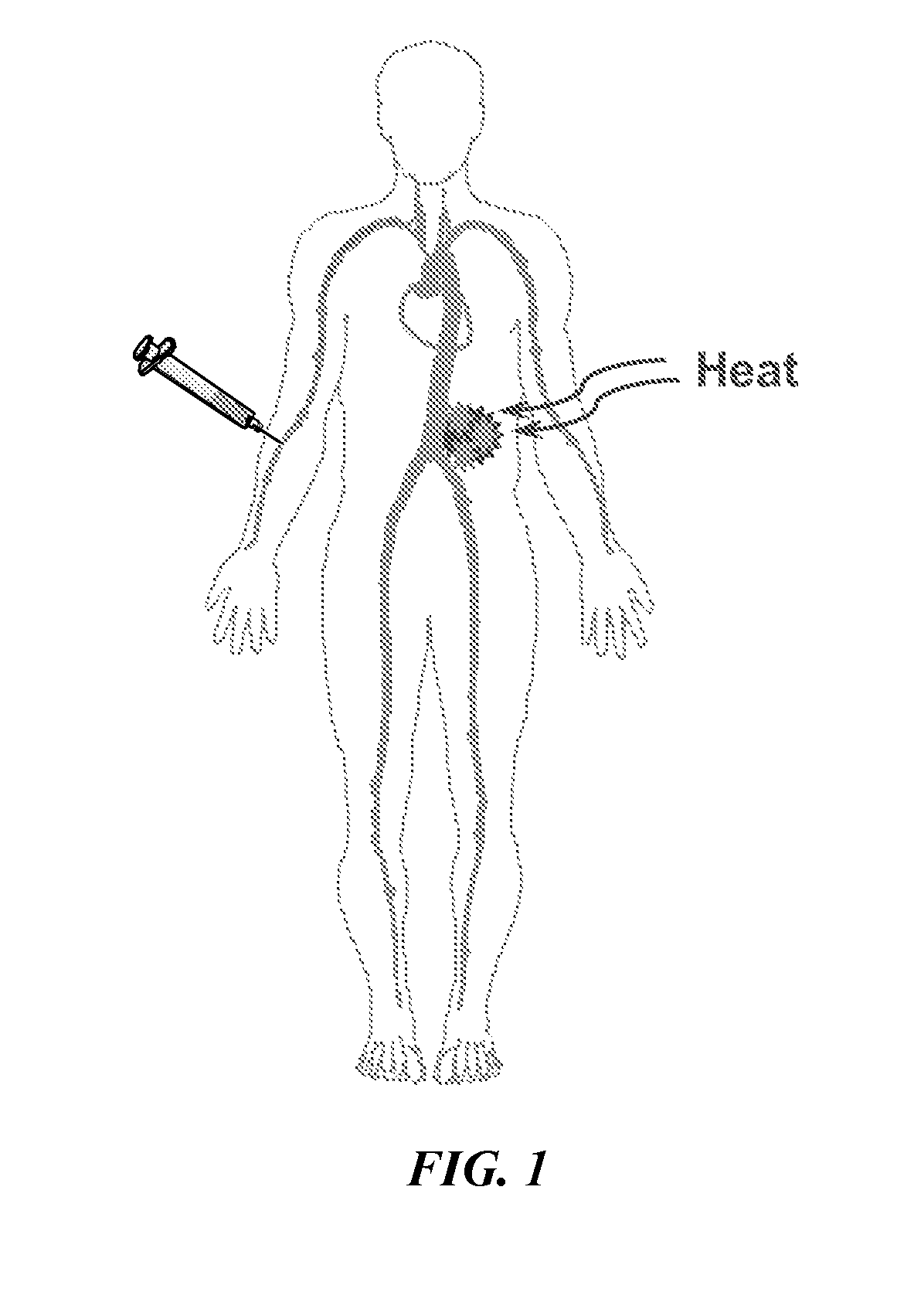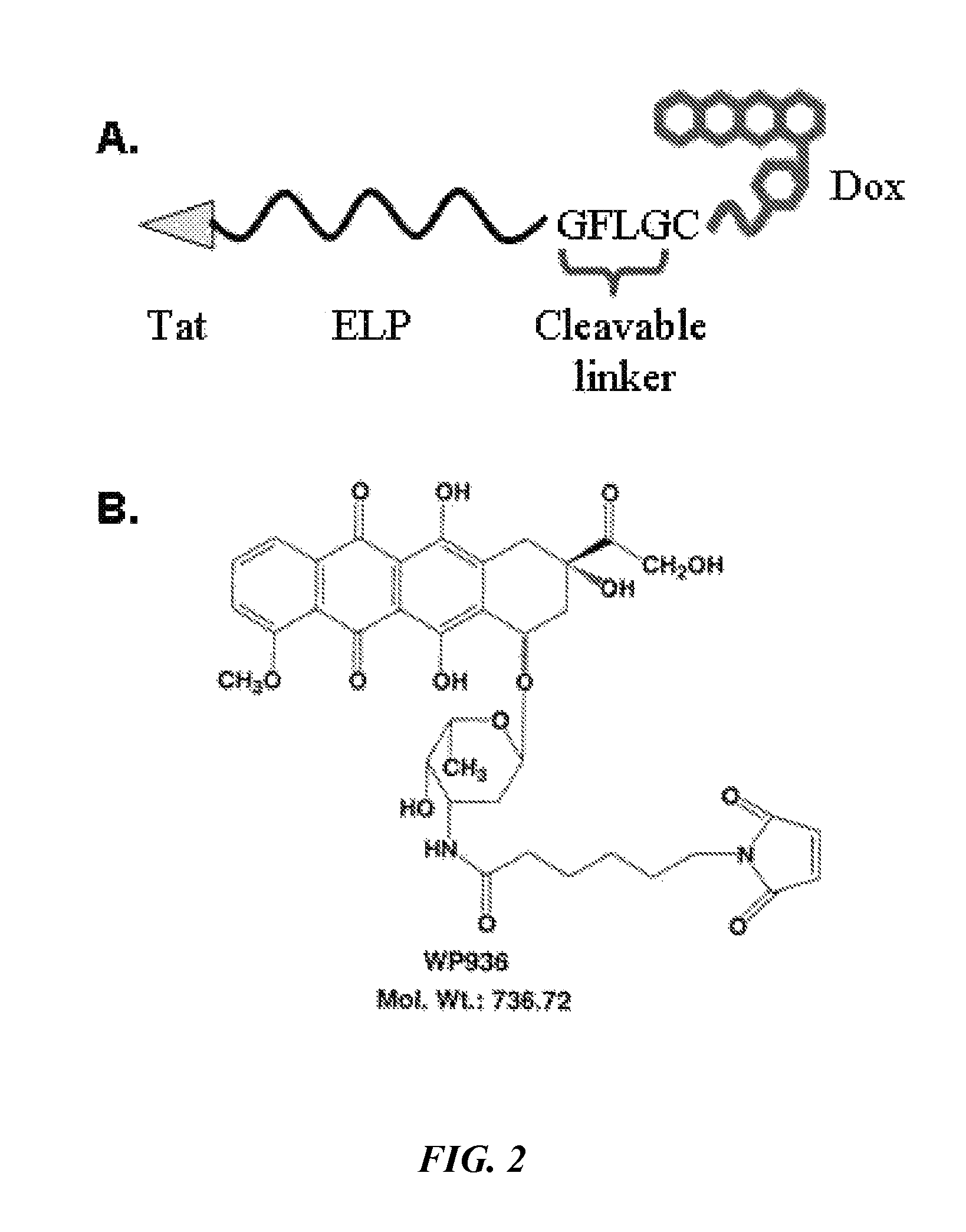Thermally-targeted delivery of medicaments including doxorubicin
a delivery system and therapeutic agent technology, applied in the direction of drug compositions, peptide/protein ingredients, peptide sources, etc., can solve the problems of non-selective cardiac toxicity and myelosuppression, and achieve the effect of efficient delivery of proteins and therapeutic compounds
- Summary
- Abstract
- Description
- Claims
- Application Information
AI Technical Summary
Benefits of technology
Problems solved by technology
Method used
Image
Examples
example 1
Thermal Properties of Polypeptides
[0103]In order to apply ELP-based polypeptides for drug delivery, a suitable temperature transition must be attained. The drug-labeled ELP should undergo its phase transition between 39 and 42° C., a temperature range sufficiently above normal body temperature to prevent unwanted systemic aggregation, but not hot enough to cause extensive toxicity. Elastin-like polypeptide is ideally suited as a thermally targeted drug carrier because the transition temperature can be easily manipulated by varying the molecular weight or the amino acid composition of the guest residue X in the VPGXG (SEQ ID NO: 2) sequence using simple molecular biology techniques. The transition temperature of Tat-ELP-GFLG-DOX (SEQ ID NO: 3) was assessed by monitoring the turbidity of a solution of the polypeptide while heating in physiological buffer. Tat-ELP1-GFLG-DOX (SEQ ID NO: 3) was found to have an ideal phase transition for drug delivery. The polypeptide is soluble and the ...
example 2
Cellular Uptake of ELP-Delivered Doxorubicin
[0105]In order to test whether the induction of ELP aggregation with hyperthermia can enhance the cellular uptake of the polypeptide, MES-SA uterine sarcoma cells were incubated with Tat-ELP-GFLG-DOX (SEQ ID NO: 3) for 1 h at either 37 or 42° C. Cells were then analyzed by flow cytometry, using the natural DOX fluorescence to quantify the amount of drug in the cells. When treated with the ELP1 containing construct, which aggregates at 40° C., the amount of drug delivered to the cells increases almost 2-fold (FIG. 10). On the other hand, uptake of the control construct which does not aggregate with hyperthermia was unaffected by heating to 42° C. This illustrates that the enhanced uptake observed after hyperthermia is the result of the ELP phase transition, not nonspecific effects of hyperthermia. This experiment demonstrates that the thermal properties of ELP may be used to increase the amount of drug delivered to a target cell.
example 3
Inhibition of Cell Proliferation
[0106]MES-SA cells were treated for 1 h at 37 or 42° C. with 5 μM Tat-ELP-GFLG-DOX (SEQ ID NO: 3); ELP-GFLG-DOX (SEQ ID NO: 3), which lacks the Tat cell penetrating peptide; or Tat-ELP-GFLG (SEQ ID NO: 3), which is not labeled with DOX. After the 1 h treatment, cells were rinsed and fresh media was replaced for 72 h. Cells remaining after 72 h were collected by trypsinization and counted using a Coulter counter. As shown in FIG. 11, the unlabeled Tat-ELP-GFLG (SEQ ID NO: 3) showed little toxicity to cells at either temperature. Similarly, the control polypeptide which lacks the Tat sequence was not cytotoxic, likely because it cannot efficiently enter the cells. Tat-ELP1-GFLG-DOX (SEQ ID NO: 3) showed little toxicity when treated at 37° C., where the polypeptide is soluble. However, treatment with Tat-ELP1-GFLG-DOX (SEQ ID NO: 3) at the hyperthermia temperature caused complete inhibition of cell proliferation. The control polypeptide Tat-ELP2-GFLG-DOX...
PUM
| Property | Measurement | Unit |
|---|---|---|
| MW | aaaaa | aaaaa |
| temperature | aaaaa | aaaaa |
| temperature | aaaaa | aaaaa |
Abstract
Description
Claims
Application Information
 Login to View More
Login to View More - R&D
- Intellectual Property
- Life Sciences
- Materials
- Tech Scout
- Unparalleled Data Quality
- Higher Quality Content
- 60% Fewer Hallucinations
Browse by: Latest US Patents, China's latest patents, Technical Efficacy Thesaurus, Application Domain, Technology Topic, Popular Technical Reports.
© 2025 PatSnap. All rights reserved.Legal|Privacy policy|Modern Slavery Act Transparency Statement|Sitemap|About US| Contact US: help@patsnap.com



